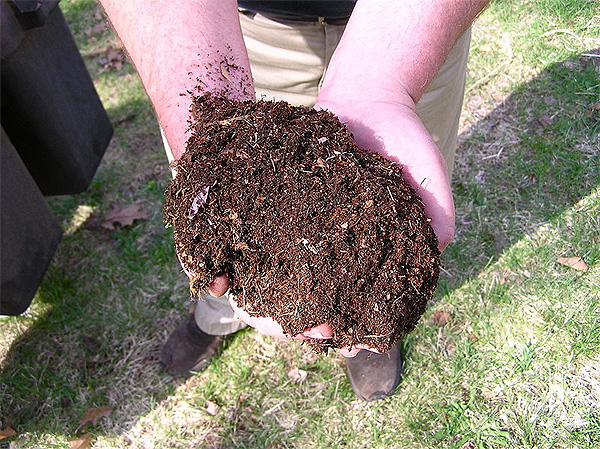Upwards of 30% of the garbage a household throws out each week could potentially go into a compost pile. When we cut domestic waste generation we are extending the life of a landfill site, and this is better for environmental management for our entire community.
Composting may seem like an intimidating task, but all that you are really doing is creating a pile of waste material and allowing it to decompose. Deciding things you can and things you can’t compost is not rocket science. With a few simple composting tips you will be on your way to becoming a master composter.

Compost via Wikimedia Commons
Your lawn, garden and houseplants cannot get too much compost. Unlike with traditional fertilizers, the nutrients in compost are fed to living plants in slower amounts. Compost gradually releases a variety of nutrients at optimal times when they are required by plants that are actively growing.
When we gardeners amend the soil with compost, we are strengthening plants and they are better equipped to deal with problems created by insects and diseases. Healthier garden plants survive attacks from garden pests and are not as susceptible to diseases.
Garden soil that has been amended with compost will act as a sponge, soaking up water when it rains, and slowly releasing it during dry spells. Compost improves the structure of both sandy and clay soils, protecting it against drought and erosion.
Here’s a simple guide on the top things to compost and what to avoid.
Things you can and can’t compost.
Generally speaking, anything that lived is a good candidate for your compost pile. A good compost pile is a healthy compost pile. Ensure your pile is made up of a variety of things to get a good mix of textures and plant nutrients.
Compost pile ingredients that are high in carbon.
Look around your property and community for “free” ingredients you can add to your compost. These are often called “brown” or “dry” ingredients, and include:
- Autumn leaves
- Grass clippings
- Paper
- Peat moss
- Sawdust
- Pine needles
- Teabags
- Wood chips
- Wood ash
- Coffee filters
- Cornstalks
- Hay and straw
- Houseplant and garden clippings
Compost pile ingredients that are high in nitrogen.
Garden refuse is called “green” or “wet” and is high in nitrogen. This includes:
- Manure
- Tea
- Coffee grounds
- Feathers
- Eggshells
- Flowers
- Seaweed
- Tea leaves
- Hair
- Food scraps (uncooked)
Some things like grass clippings are both “green” and “brown” depending on what stage you add them in.
Add these into your compost pile in equal parts by weight. Like a good baker, after time you won’t need to follow directions for composting as composting becomes second nature to you, and you can easily mix dry and wet ingredients by sight. If your compost pile is looking to “dry” add more “wet” ingredients, and add more “dry” ingredients when it’s looking too wet.
Things you should NEVER add to your compost pile.
Never add pet waste, which can contain extremely harmful bacteria. Similarly, meat, fish, dairy products, fats and oils may create unpleasant odors that attract rats and other four-footed critters that you don’t want visiting your garden and compost pile.
Make sure that you do not add any plants that are diseased or insect-infested as they may endure the heat of the compost pile. Similarly, do not add any plants with strong root systems (like crabgrass, ivy and day lilies) as they may also persist. In addition, never add any materials that are contaminated by synthetic chemicals or treated with herbicides or insecticides.
By backyard composting you are creating a finished and free soil amendment and fertilizer for your garden. It is mild and won’t burn plants like synthetic fertilizers. By adding compost, you will improve the overall texture of your soil, enabling it to retain and drain water better. Deciding what things you can and things you can’t compost is easy when you follow these simple guidelines.
See also our infographic on how to compost.

Share tips, start a discussion or ask one of our experts or other students a question.
No Responses to “Composting 101: Things You Can and Can't Compost”